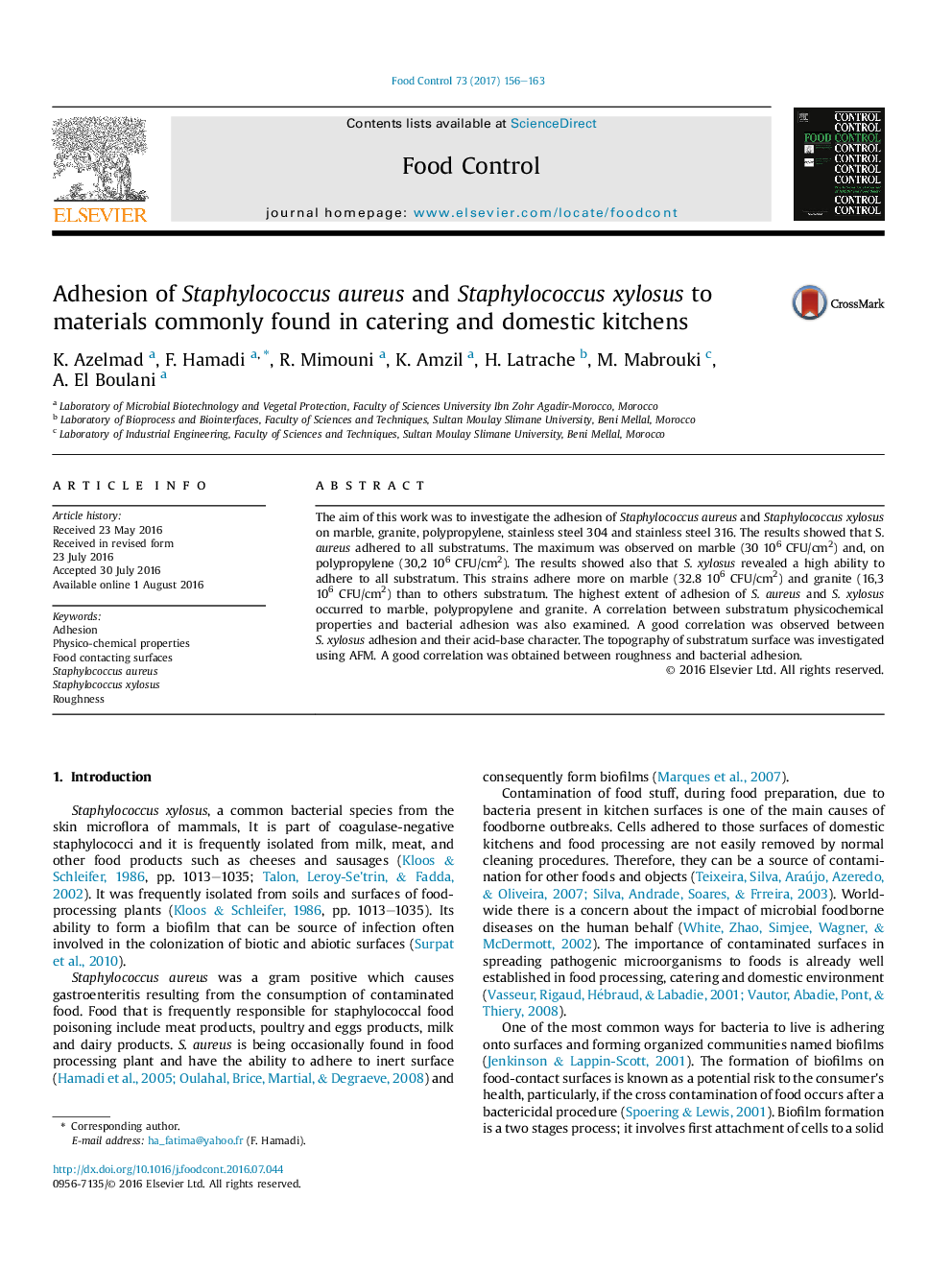| کد مقاله | کد نشریه | سال انتشار | مقاله انگلیسی | نسخه تمام متن |
|---|---|---|---|---|
| 5767626 | 1413202 | 2017 | 8 صفحه PDF | دانلود رایگان |
- The maximal adhesion of Staphylococcus aureus and Staphylococcus xylosus occurred to marble.
- The polypropylene and marble were the materials with the highest surface roughness.
- A good correlation was obtained between roughness and bacterial adhesion.
The aim of this work was to investigate the adhesion of Staphylococcus aureus and Staphylococcus xylosus on marble, granite, polypropylene, stainless steel 304 and stainless steel 316. The results showed that S. aureus adhered to all substratums. The maximum was observed on marble (30 106 CFU/cm2) and, on polypropylene (30,2 106 CFU/cm2). The results showed also that S. xylosus revealed a high ability to adhere to all substratum. This strains adhere more on marble (32.8 106 CFU/cm2) and granite (16,3 106 CFU/cm2) than to others substratum. The highest extent of adhesion of S. aureus and S. xylosus occurred to marble, polypropylene and granite. A correlation between substratum physicochemical properties and bacterial adhesion was also examined. A good correlation was observed between S. xylosus adhesion and their acid-base character. The topography of substratum surface was investigated using AFM. A good correlation was obtained between roughness and bacterial adhesion.
Journal: Food Control - Volume 73, Part B, March 2017, Pages 156-163
